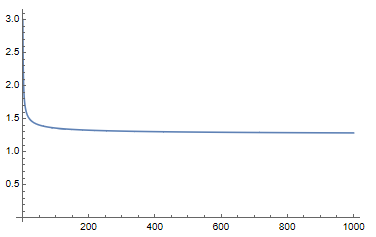More or less straightforward calculations show that $$E_n=\frac1{(2 n-1)!}\sum _{k=0}^n a_k,$$ where $$a_k:=a_{n,k}:=k! (2 n-k-1)! \binom{2 n-k+1}{k}.$$
This is rather easy to analyze by considering the ratios $a_{k+1}/a_k$, to get $$E_n\asymp\sqrt n,$$ as suggested in the comment by Sam Hopkins (even though I do not understand why this is very close to the birthday problem).
For an illustration, here is the (connected) plot $\{(n,E_n)\colon n=1,\dots,1000\}$:
Thinking a bit more about the comment by Sam Hopkins, now the similarity with the birthday problem seems clearer to me: there, we deal with exact coincidences of birthdays, here with near coincidences of ($2n$)-nomial outcomes.

